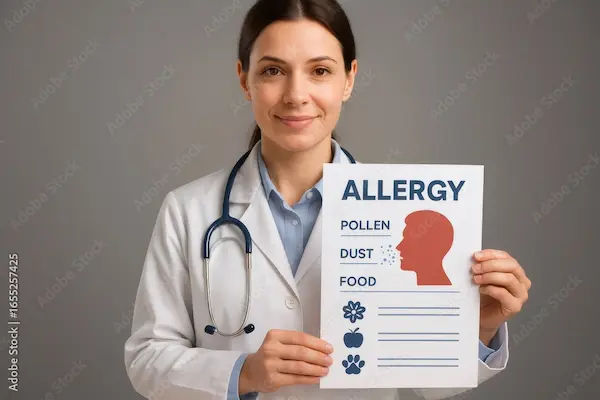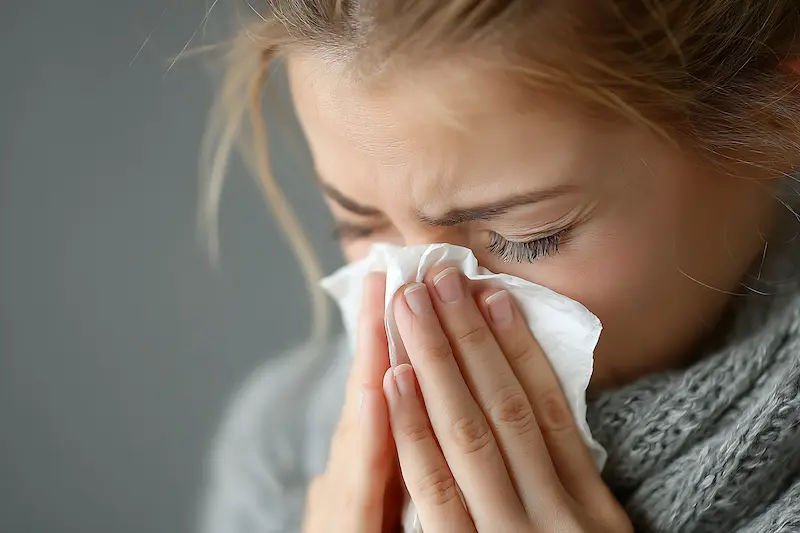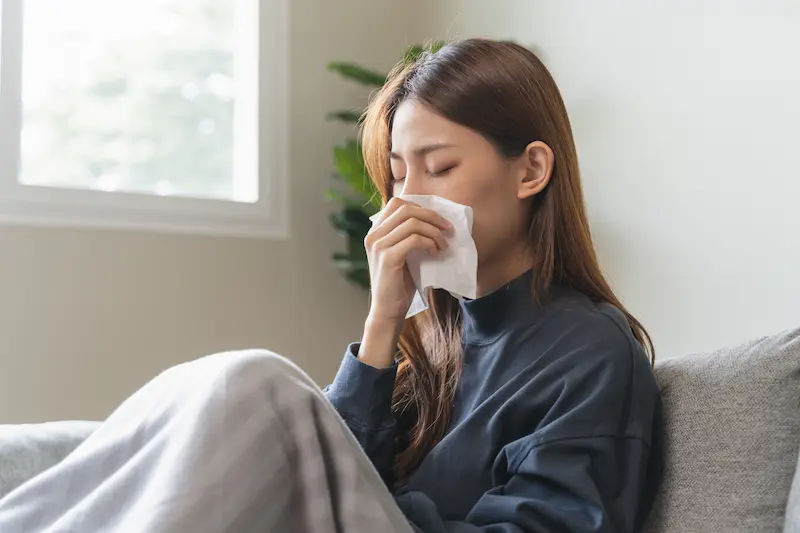Guide to Insect Bites And Stings First Aid Kit Home Care What To Expect?
Get essential home care tips, know what to put in your kit, and find out when to see a doctor. Quick relief & guidance.


Introduction
Whether you’re camping, gardening, or just relaxing at home, insect bites and stings happen. Most are harmless and heal within a few days, but some can be painful, intensely itchy, or occasionally serious. This guide brings you reliable, step-by-step advice on first aid for insect bites and stings, plus a practical first-aid kit checklist, proven home care tips, warning signs to watch for, prevention strategies, and a realistic recovery timeline. You’ll learn what to do immediately after a sting, how to remove ticks safely, which creams actually help, and when it’s time to call a doctor. We also address care for children and those with allergies, and share myth-busting insights you won’t always find elsewhere. If an insect bite or sting is bothering you right now, start with the “First Aid You Can Trust” section below. If you want to prepare for next time, skip to “Your Bites and Stings First-Aid Kit.” Either way, you’ll be ready to manage insect bites and stings with confidence.
Understanding Insect Bites and Stings
Insect bites and stings are reactions to proteins, saliva, or venom introduced by arthropods like mosquitoes, ants, fleas, ticks, and bees. Bites are usually how insects feed (mosquitoes, fleas, bed bugs), while stings are a defense mechanism (bees, wasps, hornets, some ants). The body responds with histamine release, causing itching, redness, and swelling. Most reactions are mild and resolve within days. However, a subset of people experience “large local reactions” with swelling expanding over 10 cm and lasting up to a week, particularly after stings.
Common culprits and typical symptoms:
- Mosquitoes/midges: Itchy welts that appear minutes to hours after exposure. Children often have more pronounced swelling.
- Bees/wasps/hornets (Hymenoptera): Immediate pain, redness, and swelling; bees leave a barbed stinger, wasps/hornets do not.
- Fire ants: Burning pain and small pus-filled blisters that can form within a day.
- Fleas/bed bugs: Clusters or lines of small itchy bumps, often on ankles (fleas) or exposed skin at night (bed bugs).
- Ticks: Usually painless bite; attached tick may go unnoticed. Watch for expanding rash (erythema migrans) or flu-like symptoms later.
- Spiders/scorpions: Most spider bites are harmless; certain species (e.g., widow/recluse) can cause systemic effects. Scorpion stings vary by region.
Large local vs systemic allergy: Large local reactions are dramatic but typically not dangerous; systemic reactions involve symptoms away from the bite site—hives, facial swelling, wheezing, dizziness, vomiting—and can progress to anaphylaxis, a medical emergency. If you’ve had systemic symptoms after a sting, talk to an allergy specialist about prevention and carrying an epinephrine auto-injector.
Consult a Top General Physician
First Aid You Can Trust: Immediate Steps for Common Bites and Stings
Universal first steps for most bites and stings:
1) Move to a safe area and stay calm.
2) Wash the area with soap and water.
3) Apply a cold pack (wrapped in cloth) for 10 minutes on, 10 minutes off, to reduce pain and swelling.
4) Elevate the limb if it is swollen.
5) For pain, use acetaminophen or ibuprofen unless contraindicated.
6) Watch for signs of allergy (hives, facial swelling, trouble breathing).
Bee/wasp/hornet stings:
- If you see a stinger (bee only), remove it fast. Scrape with a card or pluck with tweezers—speed matters more than method; removing it quickly reduces venom load. Myth-buster: You do not have to avoid tweezers; the priority is rapid removal.
- Clean, cool, and elevate. Consider an oral antihistamine for itch and swelling (e.g., cetirizine or loratadine).
- Large local reactions can peak at 24–48 hours and resolve in 3–7 days. A mid-potency topical steroid (e.g., hydrocortisone 1%) can help with localized inflammation.
Tick bites (safe removal and follow-up):
- Use fine-tipped tweezers to grasp the tick close to the skin and pull upward steadily. Do not twist, burn, or apply substances.
- Clean the area afterward; dispose of the tick safely.
- Note the date and location of the bite; watch for a spreading rash (often >5 cm) or fever/fatigue within 3–30 days. Early removal reduces risk of disease transmission in many settings (Lyme usually requires 36–48 hours of attachment).
- If you develop fever or a bull’s-eye rash after a tick bite, seek medical care promptly.
Spider/scorpion considerations:
- Most spider bites require the universal steps above. For severe pain, spreading skin damage, muscle cramps, or systemic symptoms, seek urgent care.
- Scorpion stings: Follow universal steps; severe symptoms (especially in children) warrant medical evaluation.
If symptoms persist beyond two weeks, consult a doctor online with Apollo 24|7 for further evaluation.
Your Bites and Stings First-Aid Kit: What to Pack and Why?
A well-stocked kit lets you act fast. Store it at home and bring a compact version when you travel or hike.
Medications:
- Non-sedating oral antihistamine (cetirizine or loratadine): Reduces itch and swelling; best taken early after a bite/sting. Long-tail keyword: best antihistamine for insect bites.
- Pain reliever (acetaminophen or ibuprofen): For pain and inflammation.
- Topical corticosteroid (hydrocortisone 1%): Helps with localized inflammation and itch; apply thinly 1–2 times a day for 1–3 days.
- Calamine lotion or a colloidal oatmeal sachet: Soothes itch without sensitizers.
- If prescribed: epinephrine auto-injector for known insect sting allergy (carry two. Long-tail keyword: anaphylaxis after insect sting, what to do.
Tools and supplies:
- Fine-tipped tweezers and a dedicated tick removal tool: For safe tick extraction.
- Alcohol wipes or antiseptic solution: For cleaning instruments/skin.
- Instant cold packs or a reusable gel pack: Rapid swelling control.
- Adhesive bandages and sterile gauze: Cover open areas if needed.
- Magnifying card and small flashlight: Improves visualization for splinters/ticks.
- Disposable gloves: For hygienic wound care.
Optional but useful:
- Sting relief wipes (ammonia-based) if they work for you.
- Permethrin-treated clothing or a pretreated bandana for hiking trips.
- A small laminated “allergy action plan” card with emergency contacts.
Why this kit works: It targets the three key issues—venom-mediated inflammation, histamine-driven itch, and secondary infection from scratching. Notably, topical antihistamines and numbing creams can cause contact dermatitis; many clinical sources prefer topical steroids and bland emollients over these for repeated use.
Home Care That Works: Relieving Itch, Swelling, and Preventing Infection
Effective home care is simple, consistent, and gentle.
Itch and swelling control:
- Cold therapy: Apply a wrapped cold pack for 10 minutes at a time, several times daily. This constricts blood vessels, reduces swelling, and mildly numbs itch fibers [1,3].
- Elevation: If a limb is swollen, elevating above heart level for 15–20 minutes a few times a day can help.
- Topicals: Hydrocortisone 1% cream or calamine can reduce itch. Bland moisturizers (ceramide-based) support skin repair. Avoid repeated use of topical antihistamines or anesthetics (e.g., benzocaine) due to sensitization risk [4,9].
- Oral antihistamines: A non-drowsy agent during the day and a sedating antihistamine at night (if safe for you) can improve sleep when itching is severe.
Skin care and infection prevention:
- Wash gently with soap and water; keep nails short to reduce skin breaks from scratching.
- If a blister forms (e.g., fire ant), avoid popping it; intact skin is the best barrier against infection.
- If the area becomes increasingly warm, painful, or starts oozing yellow crusts, consider it a possible secondary infection; seek medical advice.
- Antibiotic ointment is not routinely needed for intact skin; reserve it for minor abrasions if advised by a clinician.
Unique tip: Start an “itch schedule”—a mix of cold packs, topical steroid, and antihistamine doses spaced across the day—so relief is proactive, not reactive. For sensitive skin, test any new topical on a small area first.
If your condition does not improve after trying these methods, book a physical visit to a doctor with Apollo 24|7.
When to Call the Doctor? Warning Signs, Allergy, and Infection
Know the red flags:
- Anaphylaxis (emergency): Hives beyond the sting site, swelling of lips/face/tongue, wheeze or shortness of breath, hoarse voice, dizziness/fainting, abdominal pain/vomiting after a sting. Call emergency services and use an epinephrine auto-injector if you have one. A history of systemic reactions to insect stings warrants specialist evaluation; venom immunotherapy can dramatically reduce future risk.
- Infection: Spreading redness, warmth, increasing pain, pus, red streaks, or fever suggest cellulitis; medical treatment may be needed.
- Tick-borne illness: Fever, chills, fatigue, headache, or an expanding rash within 3–30 days after a tick bite—seek care promptly; early treatment is most effective.
Travel- or mosquito-related fevers:
- Fever after mosquito exposure (especially in dengue, malaria, or Zika regions) warrants prompt evaluation. Dengue can cause severe body aches and a rash; malaria can cause cyclical fevers [2]. Do not “watch and wait” if you feel ill after traveling.
How Apollo 24|7 can help?
- If symptoms persist beyond two weeks, consult a doctor online with Apollo 24|7 for further evaluation.
- If you develop fever after a bite or sting, a clinician may recommend tests; Apollo 24|7 offers a convenient home collection for tests like complete blood count or region-specific panels (e.g., dengue NS1, malaria tests), when clinically appropriate.
Prevention Made Simple: Repellents, Clothing, and Home Measures
Repellents:
- DEET (20–30%) is highly effective and safe when used as directed; apply to exposed skin and reapply per label [2]. Picaridin (20%) and IR3535 are comparable options; oil of lemon eucalyptus (30% PMD) is plant-derived but not for children under 3 years [2].
- Apply sunscreen first, then repellent; avoid spraying under clothing; do not apply to hands of small children or broken skin.
Long-tail keyword: DEET vs picaridin for insect protection.
Clothing and nets:
- Wear long sleeves, long pants, and socks; choose light-colored, tightly woven fabrics.
- Consider permethrin-treated clothing and gear; permethrin should not be applied directly to skin.
- Use bed nets (ideally insecticide-treated) in high-risk areas.
Home and outdoor environment:
- Eliminate standing water (planters, gutters) to reduce mosquito breeding.
- Use window and door screens and repair any tears.
- Keep grass and brush trimmed; create a gravel barrier between lawn and wooded areas to discourage ticks.
- Seal cracks and maintain clean bedding to deter bed bugs and fleas.
Travel tips:
- Check CDC travel health notices for vector-borne disease risks; pack appropriate repellents and a basic first-aid kit.
- Consider pre-travel consults for vaccines or malaria prophylaxis depending on destination.
Unique tip: Treat shoes and socks with permethrin before hikes—ticks often start low on the body, and treated footwear reduces attachment risk.
Recovery Timeline and What to Expect
Knowing the usual time course helps you avoid unnecessary worry.
Mosquito, flea, bed bug bites:
- Minutes to hours: Itch and small welts appear.
- 24–48 hours: Itch may peak; secondary lesions may develop if scratched.
- 3–7 days: Most resolve; marks can linger longer on sensitive skin.
Bee/wasp/hornet stings:
- Immediate: Sharp pain and redness.
- 12–48 hours: Swelling may increase; large local reactions can be dramatic and extend across a joint.
- 3–7 days: Swelling subsides; residual itch/tenderness may persist.
Tick bites:
- Immediately after removal: Small local redness from irritation.
- Up to 30 days: Monitor for expanding rash or flu-like symptoms; absence of these is common, and most bites do not lead to illness when promptly removed.
Spider/scorpion:
- Mild bites/stings: Improve within 3–7 days.
- Severe reactions: Seek care; recovery varies by species and treatment.
Post-reaction care:
- Continue gentle moisturization for a week after symptoms clear to support skin barrier recovery.
- For post-inflammatory hyperpigmentation (marks after healing), sun protection helps fade.
If your bite or sting hasn’t improved in 7–10 days or is worsening, consult a doctor online with Apollo 24|7.
Conclusion
Insect bites and stings are part of outdoor life, but with the right know-how and a small, well-prepared kit, most can be managed safely at home. Start with the basics: clean the area, use a cold pack, elevate if swollen, and reach for an oral antihistamine and hydrocortisone 1% for itch and inflammation. Remember the key exceptions—remove bee stingers immediately and extract ticks properly with fine-tipped tweezers. Keep a close watch for red flags such as widespread hives, breathing trouble, facial swelling, or signs of cellulitis; these require prompt medical attention. Prevention pays off: choose effective repellents, wear protective clothing, and manage your home and yard to reduce insect exposure. Finally, set realistic expectations for healing—most bites and stings improve in a few days, though large local reactions may last up to a week. If you’re not getting better, or you develop fever after a bite, reach out for care. If symptoms persist beyond two weeks, consult a doctor online with Apollo 24|7 for further evaluation, and consider home test collection when appropriate. With a little preparation and the strategies in this guide, you can handle insect bites and stings with confidence and get back to what you love—safely.
Consult a Top General Physician
Consult a Top General Physician

Dr. Ramya Hari
General Practitioner
18 Years • Medical Head & Family Physician, DG Shipping Approved Doctor, Panel Physician - UK Visa Medicals
Chennai
Apollo Medical Centre Kotturpuram, Chennai

Dr. Subramony H
General Physician/ Internal Medicine Specialist
25 Years • MBBS, MD
Chennai
Apollo Hospitals Greams Road, Chennai
(50+ Patients)

Dr. S V Prashanthi Raju
Preventive Medicine Specialist
24 Years • MBBS, MD (General Medicine), PGDDM
Hyderabad
Apollo Hospitals Jubilee Hills, Hyderabad
(150+ Patients)

Dr Vinay Kumar A V
Nephrologist
8 Years • MBBS, MD - General Medicine, DM - Nephrology
Bilaspur
Apollo Hospitals Seepat Road, Bilaspur

Dr. Pankaj Dubey
General Physician/ Internal Medicine Specialist
28 Years • MBBS,Dip.Card, MRCP., FJFICM
Ahmedabad
Apollo Hospitals Gandhinagar, Ahmedabad
Consult a Top General Physician

Dr. Ramya Hari
General Practitioner
18 Years • Medical Head & Family Physician, DG Shipping Approved Doctor, Panel Physician - UK Visa Medicals
Chennai
Apollo Medical Centre Kotturpuram, Chennai

Dr. Subramony H
General Physician/ Internal Medicine Specialist
25 Years • MBBS, MD
Chennai
Apollo Hospitals Greams Road, Chennai
(50+ Patients)

Dr. S V Prashanthi Raju
Preventive Medicine Specialist
24 Years • MBBS, MD (General Medicine), PGDDM
Hyderabad
Apollo Hospitals Jubilee Hills, Hyderabad
(150+ Patients)

Dr Vinay Kumar A V
Nephrologist
8 Years • MBBS, MD - General Medicine, DM - Nephrology
Bilaspur
Apollo Hospitals Seepat Road, Bilaspur

Dr. Pankaj Dubey
General Physician/ Internal Medicine Specialist
28 Years • MBBS,Dip.Card, MRCP., FJFICM
Ahmedabad
Apollo Hospitals Gandhinagar, Ahmedabad
More articles from Allergies
Frequently Asked Questions
What is the best first aid for insect stings?
Clean the area, remove any bee stinger quickly, apply a cold pack, elevate, and take an oral antihistamine for itch and swelling. Watch for allergy signs. Long-tail keyword: first aid for insect stings step-by-step.
How do I know if an insect bite is infected?
Increasing redness, warmth, pain, pus, or red streaks suggest cellulitis. Fever is another warning sign. Seek medical advice. Long-tail keyword: insect bite infected symptoms.
Which repellent should I choose—DEET or picaridin?
Both work well. Use DEET 20–30% or picaridin 20% as directed. For children and sensitive skin, follow label age guidance. Long-tail keyword: DEET vs picaridin for insect protection.
How do I safely remove a tick?
Use fine-tipped tweezers to grasp close to the skin and pull upward steadily; clean the area afterward. Monitor for fever or a spreading rash for up to 30 days. Long-tail keyword: tick bite removal tool instructions.
How long does swelling from a bee sting last?
Pain is immediate; swelling may peak at 24–48 hours and usually resolves in 3–7 days. Seek care for systemic symptoms or if swelling keeps worsening. Long-tail keyword: large local reaction to bee sting.



.webp)
